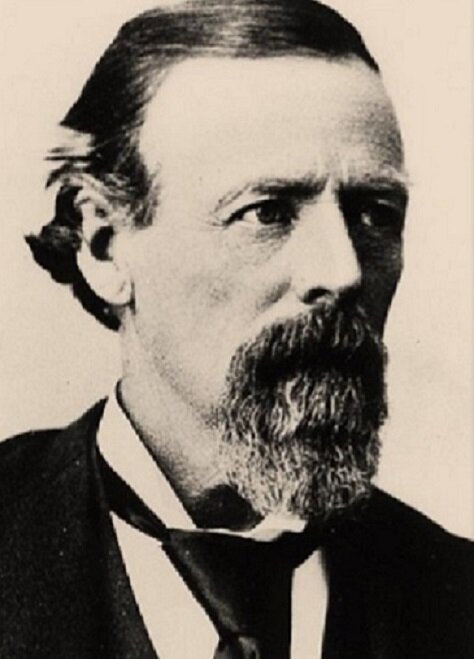John Lane Buell
John Lane Buell was a fascinating pioneer explorer of the Menominee Iron Range and founder of Quinnesec, which he platted in 1876. Sporting a diverse resume and impressive list of accomplishments, Buell was as influential an individual as the Menominee Range has ever seen.
Born October 12, 1835 in Lawrenceburg, Indiana, Buell travelled many miles prior to arriving on the Menominee Range. Having completed his early studies at Lawrenceburg, Buell briefly attended the Norwich Military Institute in Norwich, Indiana. He then ventured west to Leavenworth, Kansas and next to Colorado where, in 1859, he platted the city of Boulder at age 24. He engaged in mining in New Mexico for a brief time before starting for the Gulf of Mexico in 1861. He secured passage on a vessel and landed in New York in May 1861. In August, Buell began serving in the Civil War and was appointed 2nd Lt. in the 4th United States Infantry, participating in the Second Battle of Bull Run and the Battle of Antietam. Citing his ailing father, Buell resigned from the army after the Battle of Antietam and returned to Lawrenceburg.
In 1863 Buell studied law for six months at Harvard College before returning again to Lawrenceburg where he engaged in farming until 1866. Seeking a climate change on account of ill health Buell came to Menominee and pursued farming, publishing, and practicing law. Becoming deeply interested in the development and advancement of the Upper Peninsula Buell first visited the Menominee Range in 1871. On his second visit in May 1873, he discovered the first merchantable ore ever discovered on the Range, naming it the Quinnesec Mine.
Elected to the Michigan State legislature in 1872, Buell introduced the first ten-hour labor bill ever submitted and on March 19, 1879, he published The Menominee Range at Quinnesec. It was the first newspaper published on the Range.
His other contributions included a portable sawmill which he set up in 1876 and in 1877 he built the Pioneer Schoolhouse, a two-story frame structure located on the south side of Paint Street, which is now a part of U.S. 2. Buell also donated land for the Catholic and Methodist churches.
One of his grandest structures was a beautiful two-story brick opera house at the corner of Quinnesec Avenue and Paint Street which opened on December 30, 1879. The first floor contained two store fronts, a restaurant was located in one of the side businesses, and The Menominee Range office was located next door. The second story contained a large dance floor and auditorium with a stage, and served as Quinnesec’s social and cultural center for many years. The opera house burned down on August 23, 1925.
Buell died in his Quinnesec home on January 30, 1917 and was buried in Iron Mountain’s Cemetery Park. He was survived by his wife of 54 years, Ruth. The couple had no children.


